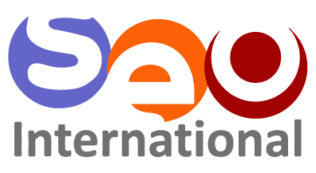AnswerThePublic for Real Influence and Local SEO Success

AnswerThePublic for Real Influence and Local SEO Success
Listening Before You Speak — The New Way to Build Influence
Walk into a co-working space in Dubai Internet City or a café in Jumeirah, and you’ll notice the same struggle among creators and entrepreneurs: “What should I post next?” Everyone wants to become an influencer, build a personal brand, or grow their business online — but most are stuck guessing what their audience truly wants to know.
In today’s world of Google AI Overviews, ChatGPT answers, and TikTok search, guessing isn’t enough. Real influence doesn’t come from posting randomly; it comes from listening to people’s real questions and concerns, then creating content that genuinely helps. That’s exactly where AnswerThePublic becomes a game-changer.
The SEO Shift — From Keywords to Conversations
SEO isn’t what it used to be. The days of stuffing keywords into blog posts are long gone. Google’s AI models now prioritize helpfulness, context, and intent — not just words on a page. People don’t search for “best laptop Dubai” anymore; they type or ask, “What’s the best laptop for designers in Dubai?”
Modern SEO is about understanding why people search, not just what they search. When you can answer the “why,” you instantly build trust. Whether you’re a psychologist, a marketing coach, or a fitness trainer, your real job is to understand what your audience worries about, searches for, and discusses online.
What Is AnswerThePublic — A Search-Listening Tool That Thinks Like People
Neil Patel’s detailed guide describes AnswerThePublic (ATP) as a search listening tool — not just another keyword generator. It listens to the internet’s collective curiosity.
When you type a topic like “mental health,” “real estate Dubai,” or “AI courses,” ATP pulls live autocomplete data from Google, Bing, YouTube, TikTok, and even Instagram. This means it shows what people are actually typing right now — the real questions behind their intent.
According to AnswerThePublic’s own documentation, the platform organizes data into five types of visual insights:
- Questions – “Who, What, When, Where, Why, How, Which, Can…”
- Prepositions – “for,” “with,” “without,” “near,” “to,” etc.
- Comparisons – “vs,” “and,” “like,” or “or.”
- Alphabetical – all related searches A to Z.
- Related – broader ideas and trending associations.
Undetectable.ai’s blog calls ATP a “mirror of online curiosity.” It doesn’t predict trends — it shows what’s already happening in people’s minds.
Decoding Intent — What People Are Really Asking
Each type of question reveals a different kind of search intent — and understanding that intent helps you create content that meets people where they are.
- Informational Intent: People asking “how” or “what” questions want to learn.
- Example: A Dubai psychologist finds that users search “how to manage stress before exams.” Perfect for a blog or short educational reel.
- Commercial Intent: Queries like “best” or “vs” show purchase readiness.
- Example: A digital marketer sees “best AI courses in Dubai” or “ChatGPT vs Jasper.” These can become comparison articles, review videos, or local guides.
- Transactional Intent: Questions with “buy,” “hire,” or “join” reveal immediate needs.
- Example: A real estate agent can target “best real estate agency to rent in Dubai Marina.”
By grouping these questions into awareness, consideration, and decision stages, you can design a content funnel that gently moves audiences from curiosity to conversion.
From Questions to Content — Becoming a Real Thought Leader
Now that you have hundreds of real questions, it’s time to turn them into meaningful answers. Here’s the workflow that top creators follow:
- Gather: Use AnswerThePublic to search your main topics — for example, “digital marketing,” “skin care,” “property investment Dubai.”
- Export: Download the data as a CSV file. Each export can contain hundreds of unique questions.
- Refine: Upload those into ChatGPT or another AI tool and ask it to combine duplicate or similar queries into clear, unique questions.
- Select: Pick 50–100 questions that best fit your niche and audience.
- Create: Build your editorial calendar — every question can become a blog post, YouTube video, Instagram reel, or carousel post.
This is how real influencers — not just loud ones — build trust. They listen, care, and provide answers long before selling anything. As you put it: “People are smart — if you trick them, it doesn’t work. If you help them, they remember you.”
From Global Questions to Local Authority
Here’s where most people miss out: local SEO.
Let’s say you’re a wellness coach in Dubai. It’s not enough to answer “how to lose weight naturally.” Localize it — “how to lose weight naturally in Dubai summer heat” or “best healthy restaurants in Dubai Marina.”
When you add a location to your content, you don’t just rank higher on Google — you also appear in YouTube, Instagram, and TikTok searches, because all platforms favor relevance and proximity.
This is how you can dominate your niche locally:
- Use AnswerThePublic to understand what people in your region are asking.
- Include location-based phrases naturally in titles and captions.
- Add local examples, case studies, and stories.
When done consistently, your answers begin to appear everywhere — Google AI Overview, ChatGPT responses, short-form video search, and traditional SEO results.
Advanced Tips — From Listening to Leading
In his tutorials and YouTube videos, Neil Patel emphasizes using ATP not just for ideas but for SEO positioning:
- Target Google’s “People Also Ask” and Featured Snippets. Use the exact questions you find as your blog sub-headers, then answer them briefly within the first two sentences.
- Validate before writing. ATP shows what’s being asked, not how often. Double-check search volume on tools like Ubersuggest, Semrush, or TubeBuddy for YouTube topics.
- Organize visually. Switch between the “wheel” and “list” view on ATP to spot clusters of related themes — perfect for planning series-based content.
- Repurpose across platforms. One strong answer can be turned into a blog post, a YouTube explainer, and three reels — each targeting a slightly different intent.
Following these techniques helps you go beyond guessing trends — you’ll be creating content people already need.
Insight Hub — Why Question-Driven Content Wins
Recent marketing research shows that 90% of online sessions begin with a question. And content that clearly answers those questions gets twice the engagement compared to generic posts.
In the UAE, where over 200 nationalities use search engines daily, locally optimized, question-driven content performs even better. Businesses and creators who focus on this type of content see up to 45% more organic local traffic and stronger trust signals in Google’s ranking system.
Put simply: when you answer real people’s concerns, Google — and your audience — reward you.
Your Next Move — From Searching to Serving
Becoming a real thought leader doesn’t start with speaking louder; it starts with listening better.
AnswerThePublic gives you a front-row seat to your audience’s mind — but it’s your empathy and consistency that turn that insight into influence.
Start today. Pick your niche. Search it on AnswerThePublic. Export the questions, refine them, and start answering one by one. Within weeks, you’ll have a library of helpful, human content that works across Google, Instagram, YouTube, and TikTok — and most importantly, builds trust.
And suppose you’d like to learn how to combine tools like AnswerThePublic and ChatGPT to design your entire content strategy. In that case, SEO International offers beginner-friendly AI and Marketing Courses — with group sessions at Dubai Marina, customized workshops across the UAE, online programs for global learners, and private one-on-one coaching on Google Meet.
Your audience is already asking. Now it’s your turn to start answering.


